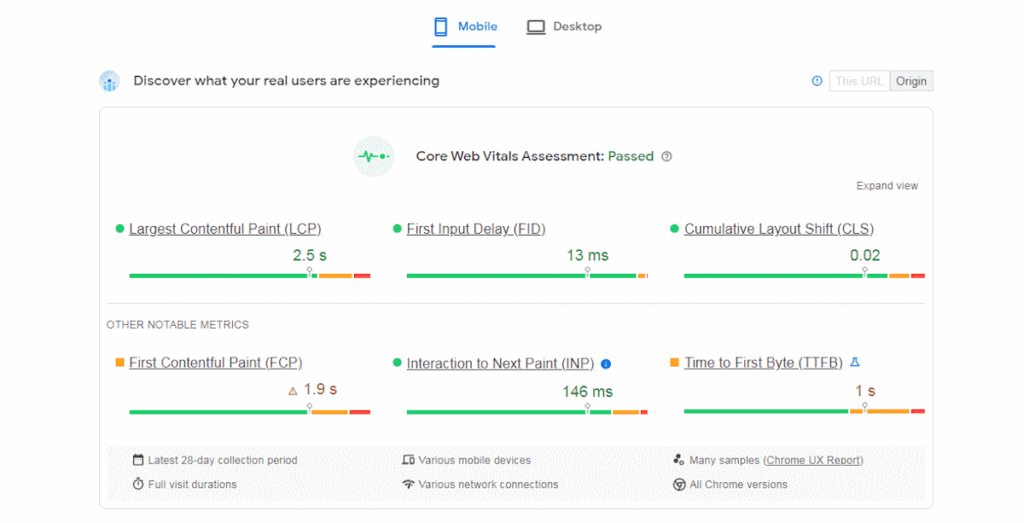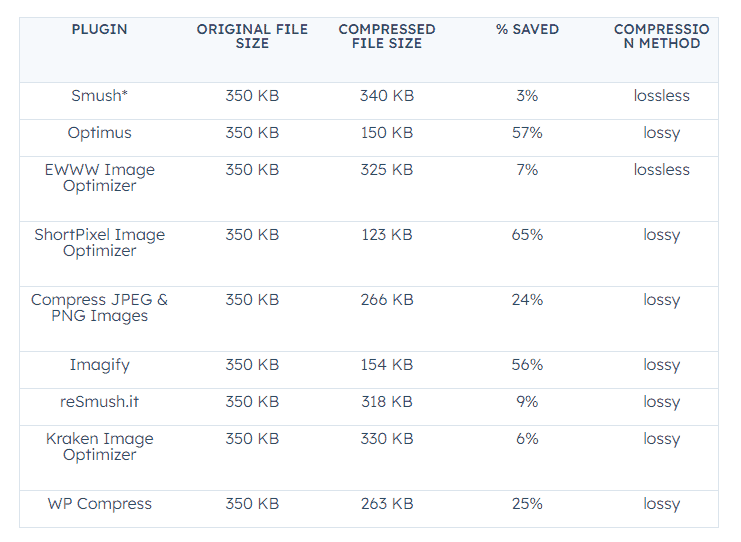8 Expert Tips to Make a Mobile Friendly WordPress Website

There’s a 50% possibility you’re reading this on your phone.
If so, how do you like it?
Did the page load quickly enough, and was the image fully loaded?
These queries should be more familiar to you as a website owner. The number of users browsing your website is growing every moment.
So, having a WordPress site that works well on phones is more vital than ever. A mobile optimized WordPress website is not a luxury anymore—it’s a necessity.
So, let’s get started and go over the top expert tips for creating a mobile-friendly WordPress website:
Why Do You Need a Mobile Friendly WordPress Website?
Yes, making a mobile friendly WordPress website is a good amount of work.
What’s the point of making mobile friendly WordPress websites?
You need a mobile friendly WordPress website if you want happy users, higher search engine rankings, and returning visitors.
Not only that. As our friend Google says,
- 50% of your web traffic is on mobile
- 63% of users will buy on a mobile friendly website
- 50% of users prefer purchases on the site over app installations
It clearly states that making mobile friendly WordPress for mobile users increases your business and user engagement by more than 50%. Now, that’s many benefits!
Would you like to lose 50% of the potential business? No?
Then, you should work to make a mobile friendly WordPress website.
Is Your WordPress Mobile Friendly?
You may say that your website runs smoothly in your mobile browser. That’s fair.
But is it mobile optimized for all users from different devices?
That’s something you should look into. Don’t worry!
Many online tools are available to test the mobile friendliness of a WordPress website. Let’s look at a few tools to check if your WordPress site is mobile friendly.
1. Google Mobile-Friendly Test
Use Google’s Mobile Friendly Test tool to see if your website is mobile friendly. You can test it by entering your website URL into the tool.
It will inform you whether your site is mobile friendly or not. If your WordPress needs to be mobile optimized, the tool will identify problems and assist you in resolving them.
Even though this test m
ay give few technical details, it does help improve the mobile user interface and experience. It will show you the way.
2. mobiReady Mobile Friendly Test
mobiReady is a comprehensive tool that displays the performance of your website on various types of phones. It also includes page size, transferred data, used requests, and numerous other details.
The most important feature is that it categorizes your website’s mobile performance into Major Fails, Minor Fails, and Passes. Thus, you’ll know what to work on.
3. Google’s Page Speed Insights
Google’s Page Speed Insights is another mobile friendliness checker for WordPress websites. It shows you some of the most critical technical aspects of your website’s mobile optimization.

8 Expert Tips to Make a Mobile Friendly WordPress Site for Users
Since everyone now has a smartphone, you must ensure your WordPress site works well on phones. Make sure your WordPress is mobile friendly and works well on all screen sizes.
Google now gives more weight to the mobile version of your site when determining rankings and indexing pages.
To make things easier for you, we’ll discuss 7 expert tips on how to optimize WordPress websites for mobile:
1. Use Mobile Friendly WordPress Theme
The most crucial tip for optimizing WordPress sites for mobile users is to use a responsive WordPress theme. It can solve most WordPress mobile view issues right away.
Testing a WordPress theme on your mobile device several times before installing it is a good idea. Try the demo on various devices like computers, tablets, and phones to ensure mobile optimization. Make sure to get an efficient mobile UI for your website.
When deciding on a responsive theme, look at its history of updates or the changelog. Look for information such as the last update date, maintenance, and whether it matches the WordPress and PHP versions of your hosting.
2. Good Hosting Plan from a Reliable Hosting Provider
If you want to optimize your WordPress for mobile, you should use the service of a reputable web host provider. Not only a reputable hosting but also pick a good plan.
Avoid shared hosting for high-traffic WordPress sites because it will slow down your site. For optimal website performance, you should use a managed hosting service.
If the host uses fast servers and modern tools like solid-state drives, your site will load faster on mobile devices. Mobile optimization relies on loading speed to keep users engaged.
Also, a good hosting company may offer in-house caching and content delivery networks (CDNs) to improve mobile site speed and performance. Thus, you get the groundwork done for creating a mobile friendly WordPress website.
3. Enable Google Accelerated Mobile Pages (AMP) in WordPress
Your tech devices are getting smaller every day. The shift toward mobile first browsing is the future. Google gives page speed for mobile users the highest priority because of this.
Google Accelerated Mobile Pages (AMP) is an HTML framework designed to speed up web page loading on mobile devices. Caching AMP files in the cloud speeds up website loading. It aims to speed up mobile page loads and improve the user experience.
Most WordPress users believe that Goole AMP is only for mobile pages. Well, it was, but not anymore!
What?….. Yes!
WordPress states in the AMP plugin details,
“Contrary to the popular belief of being only for mobile sites (it doesn’t stand for Accelerated Mobile Pages anymore!), AMP is a fully responsive web component framework, which means that you can provide AMP experiences for your users on both mobile and desktop devices.”
Enabling Accelerated Mobile Pages (AMP) will increase the visibility of your WordPress site in mobile search results. By loading pages faster, AMP can boost your website’s search rankings.
You can enable AMP using some excellent free WordPress plugins:
- AMP Plugin: Automattic, Google, and other leading WordPress developers created the AMP plugin. It offers advanced developer tools to fix validation issues and achieve full AMP compatibility.
- AMP for WP: The AMP for WP plugin automatically adds Google AMP Project functionality to your WordPress site. Install and activate the plugin, and AMP will make your website faster for mobile visitors.
4. Use Mobile Friendly WordPress Plugins
WordPress is a blend of lots of plugins. Not using proper plugins can often create issues for you. Using the right ones would solve all problems and make you a mobile friendly WordPress website.
Choose lightweight, responsive, and mobile friendly WordPress plugins. These plugins will automatically make all your website’s features mobile optimized.
They add touchscreen-friendly menus and design elements for smaller screens. They also make your mobile site load faster, which improves user experience.
5. Optimize WordPress Images
Optimize your images in WordPress to make a mobile friendly WordPress. Large, unoptimized image files can slow your site. Likewise, these large image files may scale poorly on phones.
Compressing images is the best way to optimize images. An efficient image compression tool such as Shortpixel Image Optimizer will allow you to decrease your image size without losing quality.

We don’t recommend Shortpixel because it’s one of our products. But, industry-famous experts from Hubspot say that Shortpixel has the best image compression rate.
Whether you are compressing a JPEG image, a PNG image, or even a GIF image, Shortpixel reduces the image to 65% without losing quality and 90% reducing a little.
6. Use Lazy Load Images
Lazy loading means your website only loads images when users scroll to them. This method only loads images on the screen.
Let’s say your website has 5 images on a post—one at the top and the other 4 at the middle and bottom. The lazy load only loads the first image since it’s on the user’s screen.
So, instead of loading 5 images at once, your WordPress is loading one. That’s a 5x increase in image loading speed. Other images will load after that.
You can enable lazy load image features from the settings using a cache plugin. If not, you can use dedicated WordPress lazy load plugins such as LazyLoad Plugin or a3 Lazy Load.

7. Avoid Using Full-Screen Pop-Ups
If you want to make a mobile friendly WordPress, avoid full-screen pop-ups. It has a serious impact on mobile browsing.
Full-screen mobile pop-ups are annoying and disrupt the user experience. It may irritate your users and make them leave. That will only increase the bounce rate of your website.
Google also dislikes intrusive pop-ups that cover the main content or appear right away. So, it could lead to lower rankings in mobile searches.
If you must use a pop-up, make it smaller and less pushy on mobile devices. That would be the best way to get a mobile friendly WordPress website.
So, it’s best to hide pop-ups on mobile devices so they don’t annoy users. Also, please use mobile friendly WordPress plugins for pop-ups, email options, and CTAs.
8. Reduce HTTP Requests
Your WordPress site needs a separate HTTP request for each image, stylesheet, script, or other file type it loads. They can potentially slow down website loading on mobile browsers and cellular networks.
Reduce the number of HTTP requests made by your website to make it fast-loading and mobile friendly. Fewer HTTP requests result in faster page loading times, which is crucial for mobile users.
You can do this by combining CSS and JavaScript files, using CSS sprites, and streamlining the elements on your pages.
function mysite_combine_scripts() {
wp_enqueue_style('combined-styles', get_template_directory_uri() . '/css/combined-styles.css', array(), '1.0.0', 'all');
wp_enqueue_script('combined-scripts', get_template_directory_uri() . '/js/combined-scripts.js', array('jquery'), '1.0.0', true);
}
add_action('wp_enqueue_scripts', 'mysite_combine_scripts');
Summary
Time and website visitors wait for none!
You must create a mobile friendly WordPress website if you want visitors to return to your site tomorrow.
These expert tips will help you optimize your WordPress site for mobile users, improving user engagement and search engine rankings.
Remember that having a mobile optimized website isn’t about improving user experience but about remaining competitive in this 7-second attention span era.